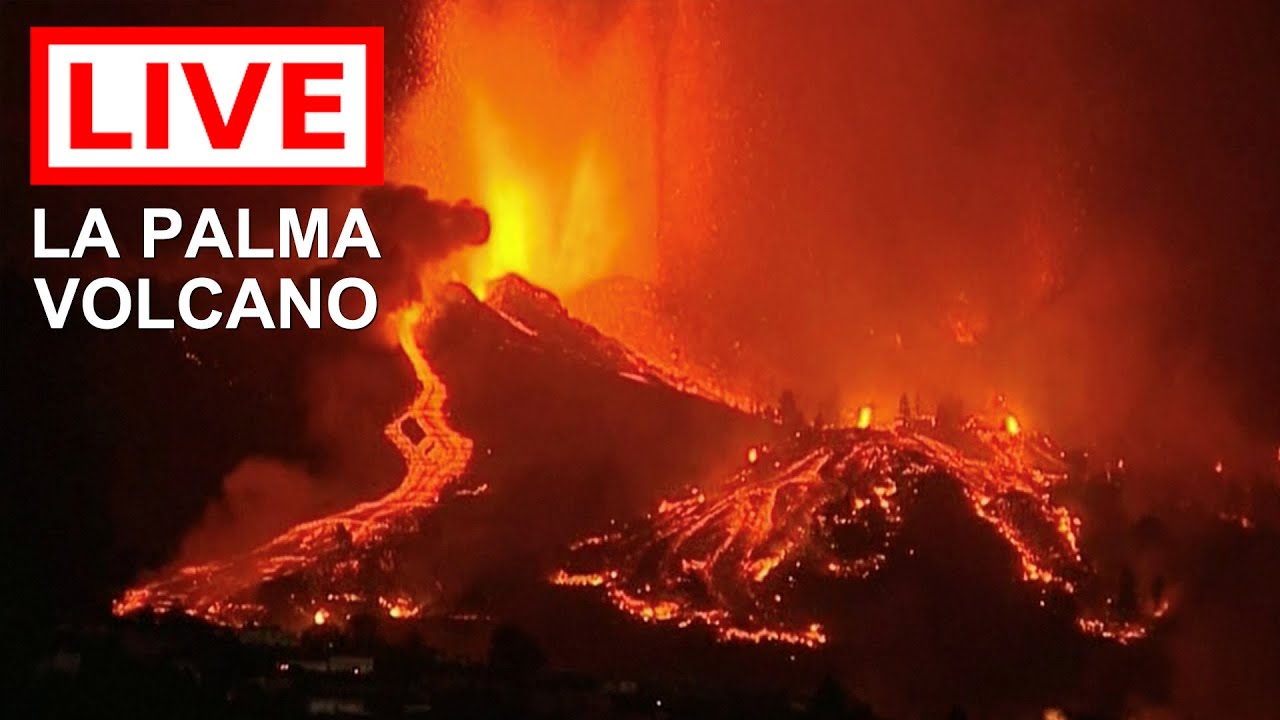A volcanic eruption began this Sunday afternoon at the Cumbre Vieja de La Palma, in the Las Manchas area, after thousands of earthquakes have been registered in the area in recent days, where a huge column of volcanic materials can be seen.
To help the people of La Palma who have lost their homes, you can make a donation here: https://www2.cruzroja.es/-/ayuda-afectados-volcan. Thanks!
Sources:
– RTVC / TelevisionCanaria https://rtvc.es/ & RTVE https://rtve.es/
– Latest statistics (lava area* and homes destroyed): Copernicus Emergency Management Service (© 2021 European Union), https://emergency.copernicus.eu/mapping/list-of-components/EMSR546
– Roque de los Muchachos Observatory Feed (Sky-live.TV, European project EELabs)
Live images of the volcanic eruption produced in Montaña Rajada, in the municipality of El Paso on the island of La Palma (Canary Islands, Spain), taken by the Interreg EELabs project camera, which from the Roque de los Muchachos Observatory (Garafía , Instituto de Astrofísica de Canarias), looks towards the Caldera de Taburiente towards the South of the Island.
– La-Palma247.com (still cam)
– Wind map provided by windy.com
* Afar.tv calculates lava area in real-time by determining the rate of growth by using the latest two measurements provided by the CEMS. This data is recalibrated when CEMS provides new data.
From Wikipedia:
La Palma, also San Miguel de La Palma, is the most north-westerly island of the Canary Islands, Spain. La Palma has an area of 708 square kilometers (273 sq mi) making it the fifth-largest of the eight main Canary Islands. The total population at the end of 2020 was 85,840, of which 15,716 lived in the capital, Santa Cruz de La Palma, and about 20,467 in Los Llanos de Aridane. Its highest mountain is the Roque de Los Muchachos, at 2,423 meters (7,949 ft), being second among the peaks of the Canaries only to the peaks of the Teide massif on Tenerife.
In 1815, the German geologist Leopold von Buch visited the Canary Islands. It was as a result of his visit to Tenerife, where he visited the Las Cañadas caldera, and then later to La Palma, where he visited the Taburiente caldera, that the Spanish word for cauldron or large cooking pot – “caldera” – was introduced into the geological vocabulary. In the center of the island is the Caldera de Taburiente National Park; one of four national parks in the Canary Islands.
La Palma, like the other islands of the Canary Island archipelago, is a volcanic ocean island. The volcano rises almost 7 km (4 mi) above the floor of the Atlantic Ocean. There is road access from sea level to the summit at 2,426 m (7,959 ft),[4] which is marked by an outcrop of rocks called Los Muchachos (“The Lads”). This is the site of the Roque de Los Muchachos Observatory, one of the world’s premier astronomical observatories.
La Palma’s geography is a result of the volcanic formation of the island. The highest peaks reach over 2,400 m (7,874 ft) above sea level, and the base of the island is located almost 4,000 m (13,123 ft) below sea level. The northern part of La Palma is dominated by the Caldera de Taburiente, with a width of 9 km (6 mi) and a depth of 1,500 m (4,921 ft). It is surrounded by a ring of mountains ranging from 1,600 m (5,249 ft) to 2,400 m (7,874 ft) in height. On its northern side is the exposed remains of the original seamount. Only the deep Barranco de las Angustias (“Ravine of Anxiety”) ravine leads into the inner area of the caldera, which is a national park. It can be reached only by hiking. The outer slopes are cut by numerous gorges which run from 2,000 m (6,562 ft) down to the sea. Today, only a few of these carry water due to the many water tunnels that have been cut into the island’s structure.
From the Caldera de Taburiente to the south runs the ridge Cumbre Nueva (‘New Ridge’, which despite its name is older than the Cumbre Vieja, ‘Old Ridge.’) The southern part of La Palma consists of the Cumbre Vieja, a volcanic ridge formed by numerous volcanic cones built of lava and scoria. The Cumbre Vieja is active but dormant, with the last eruption occurring in 1971 at the Teneguía vent which is located at the southern end of the Cumbre Vieja, the Punta de Fuencaliente (‘Point of the Hot Fountain’). Beyond Punta de Fuencaliente, the Cumbre Vieja continues in a southerly direction as a submarine volcano.
Read more here:
https://en.wikipedia.org/wiki/La_Palma
https://en.wikipedia.org/wiki/Cumbre_Vieja
Map of La Palma Island:
https://bit.ly/3tXt4vB
#LaPalma #volcano #CanaryIslands #CumbreVieja

